An Abundance of Kateryns/Katherines/Catherines: Part 1!
I recently wrote a blog post on “My Favorite Thomases,” giving a little overview of numerous Tudor Thomases and ranking them somewhat arbitrarily. I had such a good time doing this, that I’ve decided to write a few more blog posts ranking various Tudor/English medieval people, because their parents were all unimaginative and kept giving them the same damn names! Expect future posts on Henrys, Marys, Edwards, Margarets, Richards, etc.
Today we’re moving to the ladies, and more specifically, AN ABUNDANCE OF (C/K)ATHERINES. (homage to John Green definitely intentional). I’m actually dividing this post into two parts so that I can finally start getting out the results to y’all, as this was one of my most popular posts on Facebook ever. (Yes, I’m taking a long time to write these. Sorry. Pandemic has shredded my ability to focus so research and writing right now is rather difficult).
THE PEOPLE’S VOTE:
Let’s start off with the people’s vote. I asked for people’s votes on 11 different Katherine/Catherines/ Kateryns from the Tudor era/important to the Tudor era (my original list actually had a few additional options, but I had to pair it down because I wasn’t going to write about like, 17 people, y’all, there aren’t enough hours in the day). These votes were compiled from comments on my author page, Traveling with the Tudors, Tudorinos, Tudor Renaisance and Reformation History, The Tudor Era, and Everything Tudor Era. If a commenter voted for more than one person, I took the first person listed as their vote, and kept the secondary votes for tie breakers (although that didn’t help in one specific area).
I’m only announcing Katherine/Kateryns 11-6 today. The Top 5 will be announced in part 2! I should note that the people’s vote was pretty close to my own personal ranking in distribution of people into the bottom 6 vs. the top 5. There’s only one Katherine in the bottom 5 of the people’s vote that I put in the top 5 of my own ranking and vice versa.
11/10/9. Tied for last: Katherine Woodville, Duchess of Buckingham: 1; Lady Kateryn Gordon of Scotland: 1; Katherine Willoughby: 1
8. Lady Katherine Grey: 1 (2nd votes - 1)
7. Queen Katheryn Howard: 2
6. “Kat” Ashley: 2 (2nd votes - 1)
RACHAEL’S RANKING:
And here we get to a little bio of each person and MY ranking. While a significant deciding factor of the “Thomases” ranking was a look at how terrible/good they were, I really can’t say that any of these Katherines/Catherines did any super terrible things. The ones ranked lower were really just less interesting to me than the ones at the top, or perhaps made decisions I consider a bit more careless or stupid.
Quick Note: As I’ve noted before, spelling of names was not standardized in Tudor times at all. Plenty of people spelled their own names in several different ways on different documents or just as the whim hit them. So honestly, I’m not fussing over the exact spellings of each name, although I’ve endeavored to use the name that the person themselves used most often.
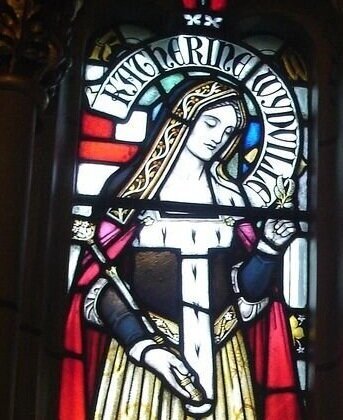
Katherine Woodville
11. Katherine Woodville, Duchess of Buckingham (through her first husband, Henry Stafford), Duchess of Bedford and Countess of Pembroke (through her second husband Jasper Tudor) (c. 1458-1497)
Summary: She outlived two husbands, survived three different kings, was immensely wealthy most of her life, and had some fairly notorious children.
- Katherine Woodville was a sister to Elizabeth Woodville and brother-in-law to Edward IV. She served her sister the Queen in the mid to late 1460s; her husband was in Queen Elizabeth’s custody as well during this time and lived in her household.
- Katherine married Henry Stafford, Duke of Buckingham while they were both children (she was likely around 7 and he was around 10); contemporary accounts of her sister Elizabeth’s coronation indicated that both Katherine and her husband were still small enough that they were carried on the shoulders of squires. The duke of Buckingham reportedly resented his marriage to a woman of inferior birth, but the couple still had 4 children together (and possibly more that didn’t live to adulthood). They were married for 13 years or so before they had any children together.
- Her first husband Henry Stafford was initially a close ally of Richard, Duke of Gloucester, when he usurped the throne from his nephews. However, Katherine did not attend Richard’s coronation, likely due to his hostility toward the Woodvilles. Henry Stafford later betrayed Richard III and was executed for treason in November 1483. Katherine and her children may have gone on the run after his death, but Katherine was quickly captured along with her younger son Henry and brought to London. Although the Duke left his wife a sizable jointure of 1,000 marks in his will (roughly equivalent to 460,430 pounds today, I figured out, using the UK National archives currency converter - this was the equivalent of 22,201 days of wages for skilled tradesmen), Katherine was attainted by Parliament because of his treason and was thus, deprived of his money. Her eldest son was kept in Richard’s custody. It is unknown where Katherine spent the remainder of Richard III’s reign, but she may have lived with her sister the Dowager Queen in sanctuary or in a trusted nobleman’s household. Richard did grant her a small annum of 200 pounds in April 1484 (roughly equivalent to 138,257 pounds a year).
- After Henry VII defeated Richard III and took the throne, her two eldest sons were placed in the wardship of the king’s mother, Margaret Beaufort, and they grew up in her care. Katherine’s attainder was reversed by Parliament and she received both her dower lands and the jointure her first husband left her in her will, making her an exceedingly wealthy woman. Katherine married the king’s uncle Jasper Tudor in 1485, when she was about 27 and Jasper was 54. Katherine was given a place of honor at her niece Elizabeth of York’s coronation in 1487, riding in the first chariot behind the queen’s in the procession to Westminster Abbey and sitting at her left side in the banquet afterward. After ten years of marriage, Jasper died. Katherine was only mentioned briefly in his will.
- Only a few weeks after Jasper’s death, she married Sir Richard Wingfield without royal license. Henry VII fined them a huge sum of 2,000 pounds, which was not paid until Katherine’s eldest son became Duke of Buckingham and came into his inheritance. Her third marriage lasted only about a year before she died in 1497. Although Richard Wingfield would outlive her by about 27 years, in his will, he ordered masses be said for her soul.
- Her eldest son Edward Stafford (Duke of Buckingham) was executed by Henry VIII for treason, continuing in his father’s footsteps. Her younger son Henry Stafford (Earl of Wiltshire) was also suspected of conspiring with his brother, but managed to stay in the king’s good graces until his death a few years later in 1523. When he died without children, his earldom became extinct. His title was granted a few years later to Thomas Boleyn.
- Her daughter Anne had a bit of a sex scandal under Henry VIII and was rumored to be having an affair with the king’s courtier William Compton. Her husband was so suspicious of her that he sent her to live in a convent 60 miles away from the royal court. Although there was no evidence of their adultery, William Compton actually did bequeath land for her in his will (which was very unusual for the time) and had the executors of his will include her in prayers for his kin.
- Katherine Woodville is also the name of a film and television actress active in the 60s and 70s who appeared in The Avengers, Mission Impossible, and Star Trek!
(Many thanks to the Freelance History writer for their article on Katherine Woodville and Kateryn Gordon, which were fantastic sources of information!)
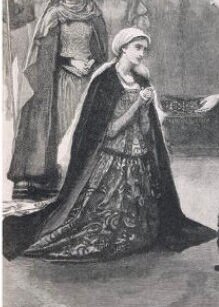
Kateryn Gordon
10. Lady Kateryn Gordon of Scotland (also known as Kateryn Huntleye) (c. 1474-1537)
Summary: She outlived three husbands and served three separate Tudor royal women (Elizabeth of York, Catherine of Aragon, and Mary Tudor), despite first coming to court as the wife of a rebel leader.
- Kateryn was a Great Granddaughter of James I of Scotland and a cousin of James IV.
- James IV gave her in marriage to the Yorkist pretender Perkin Warbeck, who quickly gained his favor upon his arrival at the Scottish court in July 1495. Warbeck claimed to be Richard, Duke of York, the younger of the “Princes in the Tower” and the son of Edward IV and Elizabeth Woodville. After their marriage in January 1496, Kateryn was known as the Duchess of York. Their marriage was celebrated with a jousting tournament.
- Her husband Warbeck raided Northumberland with James IV in 1496 for a few short days before coming home to Scotland. In 1487, Warbeck tried to take advantage of Englishmen in Cornwall angry over taxes to launch another rebellion against Henry VII. Kateryn and their young son joined Warbeck as he tried to rouse troops in Ireland and England, but were left safely away from the battle when Warbeck fought Henry VII’s troops. After Warbeck was captured after leaving sanctuary, the king’s forces went to Kateryn, who was found wearing mourning (possibly for a second son).
- Kateryn was brought to Henry VII, where she met with her husband. Some historians claim that at this meeting, Warbeck confessed his true identity to her, causing Kateryn to weep. The couple stayed at the royal court for many months but were not allowed to sleep together. Kateryn was brought into Queen Elizabeth’s household and treated well, given a pension and a place of honor due her rank. Some historians claimed around this time that Henry VII fell in love with Kateryn. Warbeck was executed in November 1499 for conspiring against the king. Their son Richard came to London with Kateryn but disappeared from the record shortly thereafter.
- Kateryn served Queen Elizabeth for many years afterward. She was present among the Queen’s ladies at the betrothal ceremony of Margaret Tudor to James IV of Scotland, and later was a chief mourner at Queen Elizabeth’s funeral. After the Queen’s death, Kateryn apparently was close with Henry VII, playing cards with him, painting scenes for him, and acquiring medicines for him. He granted her land in Berkshire shortly before his death in return for her promise that she would not leave England without royal license. She became an English citizen in 1510.
- Kateryn later served Catherine of Aragon in 1509-1510, while she was Dowager Princess of Wales. From 1525-1530, she served as Mary Tudor’s chief lady of the privy chamber.
- Kateryn married a gentleman usher of the king’s chamber in 1510-1512, who later died and left all his property to her. She married again in 1517 to a Welsh knight and went to live with him in Wales; he died in 1531 and named Katherine as executor of his will, leaving her significant property. She entered into her last marriage sometime before January 1536. She spent the last years of her life on her own lands in Berkshire, where she regularly went horseback riding.
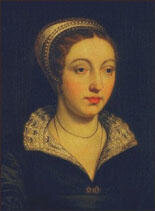
Kat Ashley
9. “Kat” Astley (sometimes written as Ashley) (born Katherine Champernowne) (c. 1502-1565)
Summary: A much-loved governess to the future Elizabeth I who went on to serve the queen as one of her highest-ranking and most powerful ladies.
-Kat was appointed a waiting gentlewoman to the 4-year-old Princess Elizabeth (the future Elizabeth I) in 1536, shortly after Anne Boleyn’s death, and became her governess in 1537. We do not know about Kat’s educational background, but it must have been impressive, as she taught the young princess a variety of subjects. Numerous secondary sources state that Kat taught Elizabeth “astronomy, geography, history, mathematics, French, Flemish, Italian, and Spanish,” in addition to the usual noble women’s education of needlework, embroidery, dancing, riding, and deportment. I actually haven’t been able to find more primary sources or encyclopedia sources that state that, but lots of blogs! In any case, contemporary records at the time indicate that those who met Elizabeth as a child found her extremely intelligent and “formidably learned,” indicating that Kat was indeed quite good at her job.
- Kat married Sir John Astley/Ashley, a senior gentleman attendant of Elizabeth’s in 1545. Apparently her new husband was also a distant relation of Elizabeth through her mother Anne Boleyn. As she was over 40 at the time, she was past childbearing age, so this marriage was likely for love.
-After Henry VIII died in 1547 and Edward VI took the throne, the teenage Elizabeth was sent to live with her stepmother Catherine Parr and her new husband Thomas Seymour. Kat accompanied her charge there. There, she witnessed Seymour’s flirtatious behavior toward the 14-year-old princess, which was at the very least inappropriate and may have actually constituted sexual abuse. Kat later described the flirting as “possibly questionable dealings.” Reportedly, on several occasions, Seymour, clad only in a nightshirt, “would come many mornyngs into the said Lady Elizabeth’s chamber, before she were redy, and sometyme before she did rise.—-And if she were in hir bed, he wold put open the curteyns, and bid hir good morrow…and one morning he strave to have kissed her in bed.” (Burghley’s state papers, vol. I., by Haynes, p 96, from the confession of Thomas Parrye her cofferer [treasurer], relating what Catharine Ashley told him)/ Seymour also supposedly cut Elizabeth’s black gown into ribbons while Kateryn Parr held her. Eventually, Parr found Elizabeth in Seymour’s arms and sent Elizabeth away.
- When Thomas Seymour was investigated for treason in early 1549, Kat was arrested and imprisoned in the Tower of London, along with her husband John and Elizabeths’ cofferer [treasurer]. There, she was interrogated on everything she knew about Seymour’s doings with Elizabeth. She was eventually released in March 1549 and returned to live with Elizabeth at Hatfield.
- Under the reign of Mary I, only a few years after Elizabeth herself was released from the tower, Kat was arrested and sent to Fleet Prison for owning seditious books. She was imprisoned for three months and afterward, was forbidden from seeing Elizabeth.
-Once Elizabeth rose to the throne, Kat served her as Chief Gentlewoman of the Bedchamber, wielding great power and influence at court.
-Kat died in July 1565 after a brief illness, after serving Elizabeth for almost 30 years. Elizabeth was incredibly fond of her and supposedly said “Anne Boleyn gave me life but Kat Ashley gave me love.”
MAZZOLA, ELIZABETH. “Schooling Shrews and Grooming Queens in the Tudor Classroom.” Critical Survey, vol. 22, no. 1, 2010, pp. 1–25. JSTOR, www.jstor.org/stable/41556342. Accessed 21 Oct. 2020.
The Progresses and Public Processions of Queen Elizabeth: Among which are Interspersed Other Solemnities, Public Expenditures, and Remarkable Events During the Reign of that Illustrious Princess, Volume 1
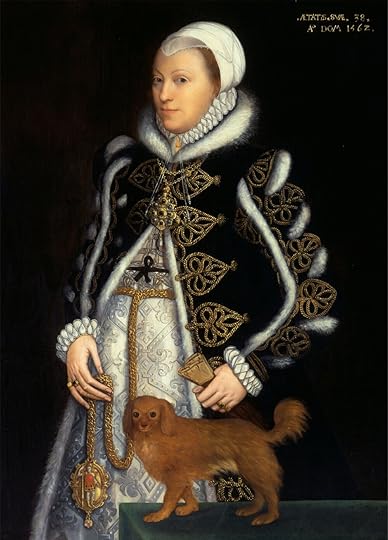
Lady Catherine Carey
8. Lady Catherine Carey (known after her marriage as Catherine Knollys) (c. 1524-1569)
Summary: A cousin of Elizabeth I who might have been her half-sister as well, Catherine served two Tudor queens consort and a queen regnant, endured religious exile, and had a prosperous family life, with over a dozen children surviving infancy.
- Catherine was the daughter of William Carey, Gentleman of the Privy Chamber and Esquire of the Body to Henry VIII, and Mary Boleyn, and thus, a cousin of Elizabeth I’s. Some believe that Catherine was an illegitimate child of Henry VIII, but there is no definitive evidence to prove such a theory.
- Catherine likely witnessed the execution of her aunt Anne Boleyn in 1536, at the age of around 12. She served both Anna of Cleves and Catherine Howard as a maid of honor.
- In 1540, she married Sir Francis Knollys, an English courtier and member of parliament who was favored by Henry VIII and had been in attendance on Anna of Cleves when she arrived in England. During Mary I’s reign, Catherine and her husband, who were staunch Protestants, fled to Germany.
- Catherine, a favorite of Elizabeth’s, was made Elizabeth I’s Chief Lady of the Bedchamber upon her cousin’s accession to the throne. While holding this high profile position, she gave birth to more than half a dozen children (she had 14 overall. All survived infancy except one). Her husband was appointed treasurer of the queen’s chamber in 1566 and promoted to treasurer of the household in 1570.
- Catherine’s husband Francis had the dubious honor of serving as the keeper of Mary, Queen of Scots, from 1568 to 1569. Catherine died in January 1569 while he was away dealing with Mary; Mary herself blamed Elizabeth for Catherine’s death, saying that Francis’s enforced absence was the cause.
-After Catherine’s death, her husband Francis would serve Elizabeth as a treasurer, advisor, and MP. He spoke out in support of the Puritans in particular. He eventually died in 1596.
- Of note: Catherine’s daughter Lettice would eventually marry the queen’s favorite, Robert Dudley, Earl of Leicester, without the Queen’s knowledge or approval. Although Lettice was the daughter of Elizabeth’s cousin and a former maid of her privy chamber, the furious Elizabeth banished her from court for the rest of her life.
-Catherine Carey was the 11th great-grandmother of Elizabeth II, the current queen of the United Kingdom.
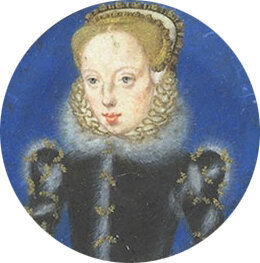
Lady Katherine Grey
7. Lady Katherine Grey (later Katherine Seymour, Countess of Hertford) (1540-1568)
Summary: A romantic who was too close to the throne, Katherine was punished for her secret marriage and imprisoned for the rest of her life.
-Katherine was a granddaughter of Henry VIII’s sister Mary and Jane Grey’s younger sister. According to the usual laws of succession, Katherine and her sisters were preceded in the line of succession only by Henry VIII’s three children and the descendants of Princess Margaret (Henry VIII’s elder sister who married the king of Scotland). However, Henry VIII had excluded the Scottish regnal line from the succession in his will, which placed Katherine even closer to the throne.
- In the final months of Edward VI’s life, Katherine and her older sister Jane were married on the same occasion to the relatives of powerful noblemen who wished to keep Princess Mary (Henry VIII’s eldest daughter and a notorious Catholic) from the throne (in accordance with Edward VI’s own wishes). Jane was married to Guildford Dudley, the son of Edward VI’s chief minister John Dudley, Duke of Northumberland, while Katherine was married to Henry, Lord Herbert, the heir apparent to William Herbert, Earl of Pembroke. After the wedding, Katherine went to live with her husband. After the failed attempt to put Jane on the throne, Henry’s father separated his son from Katherine and had their marriage annulled on the grounds of non-consummation. Katherine’s sister Jane and her father the Duke of Suffolk were both executed following Wyatt’s rebellion.
-Katherine was a maid of the privy chamber under Mary I but was demoted to a maid of the presence chamber under Elizabeth (all the higher gentry had access to the presence chamber). This indicated that Katherine was not in the queen’s favor, even though she was the presumptive heir to the throne at the time.
-As Elizabeth’s presumptive heir, Katherine’s marriage was the subject of much discussion among Elizabeth’s councillors and of others at court, including the Spanish ambassadors.
- In December 1560, Katherine secretly married Edward Seymour, Earl of Hertford, with only a priest and one witness (Edward’s sister, Jane) present. Jane died a few months later. This was against the law, as [anyone close to the throne had to have royal permission to marry]. Fun fact: Edward Seymour (who was the son of the more famous Edward Seymour, Duke of Somerset, who was executed under Edward VI) had a distant claim of his own to the throne, as he was descended from Edward III.
- While Edward was abroad in Europe, Katherine realized she was pregnant. This was…incredibly dangerous for a noblewoman and heir to the throne whom everyone believed to be single. Late in her pregnancy, she confessed her secret marriage and pregnancy to Robert Dudley, the Queen’s favorite, and begged him to intercede with her to the queen. Whatever Dudley said, it didn’t help, as Katherine was promptly thrown into the Tower of London. Her husband was also imprisoned shortly thereafter.
- While in prison, Katherine gave birth to a son, Edward Seymour, Viscount Beauchamp in September 1561. Shortly thereafter, a church commission declared Katherine’s marriage invalid. As the priest could not be found and their only witness had died, they had no evidence otherwise.
- Sympathetic guards in the tower had allowed Katherine and Edward to spend time together, which resulted in Katherine giving birth to a second boy in February 1563. The furious Queen Elizabeth had the lieutenant of the tower locked up in his own prison and had Katherine and her huband sent to different country houses, where there could be no more secret liaisons.
- Throughout Katherine’s imprisonment, her supporters worked both in court and in Parliament to have her sons recognized as legitimate, the couple freed from prison, and Katherine recognized as heir to the throne. In fact, a member of parliament named John Hales actually published a 1563 book which discussed Katherine’s right to the throne under Henry VIII’s will and pointed to protestant clerics who had ruled that Katherine’s marriage was valid under church law. Hales was later sent to the tower by Elizabeth. In 1566, numerous members of parliament who supported Katherine fought for the right to debate the succession, despite the queen’s direct command not to do so.
- Despite all efforts to help her, Katherine spent the rest of her life in prison, where she fell further into despair at being separated from her family. When she died in January 1568, at age 28, she had been separated from her husband and eldest son for over four years. Her husband Edward was later freed in 1571 and lived to the ripe old age of 84; in his final years, he had found the priest who had married them, definitively proving the validity of their marriage.
- Despite the sad end to her own life, Katherine is the 10th great grandmother of Elizabeth II, the current queen of the United Kingdom.
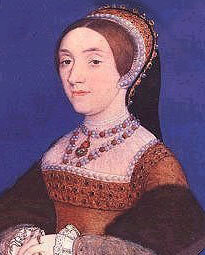
6. Queen Katheryn Howard (c. 1523-1542)
Summary: Katheryn Howard was a vivacious but neglected teenager who was involved with and abused by men from an early age, became Henry VIII’s fifth wife, and was executed tragically young.
- Katheryn was a member of the illustrious aristocratic Howard family and Anne Boleyn’s first cousin. Her immediate family however, was not wealthy and her father often had to beg for handouts from his rich relatives. Her mother had five children with her first husband and then had another six with Katheryn ’s father; as one of the youngest children, Katheryn was likely not her parents’ top priority.
- After her mother’s death when Katheryn was about 5 years old, she was sent, along with several of her siblings, to live with her father’s stepmother, the Dowager Duchess of Norfolk. Although it was common for noble families to send their children to be trained in other noble households, the Dowager Duchess’s household was notoriously lax and undisciplined. It is reported that the children there ran a little wild; several of the older girls there entertained male visitors in the girls’ dormitory at night, receiving gifts in return.
- Katheryn could read and write but was not as well educated as many of Henry’s other wives. She was apparently quite vivacious and giggly. At age 13, her adult music teacher Henry Mannox molested her repeatedly. Katheryn later reported, “At the flattering and fair persuasions of Mannox, being but a young girl, I suffered him at sundry times to handle and touch the secret parts of my body, which neither became me with honesty to permit nor him to require.”
At 15, she allegedly took Francis Dereham (who was at least 28), one of the Duchess’s secretaries, as her lover. They referred to each other as husband and wife and Katheryn kept track of Dereham’s money for him while he was away on business. This relationship was apparently common knowledge among many of the Duchess’s maids of honor and attendants. However, the Dowager Duchess of Norfolk put a stop to it when she discovered it.
Basically, the evidence indicates that Katheryn Howard probably was sexually active before her marriage, but as a very young girl with really no one looking out for her, it’s very likely that such activities weren’t entirely consensual. By modern standards, these relationships would definitely be considered statutory rape.
- Later, her uncle, the influential Duke of Norfolk, Thomas Howard, obtained a place for her in Anne of Cleves’ household, where she served as a maid of honor. Henry met her there and became a bit infatuated, claiming he had never known her “like to any woman” and giving her great gifts of land and expensive cloth. He called her his “very jewel of womanhood” (the story that he called her “his rose without a thorn” is a myth). Contemporary accounts describe Katheryn as giggly and vivacious. She enjoyed dancing but was often distracted and jocular during her lessons.
- Katheryn married Henry when she was possibly around 17 and he was 49, less than a month after his marriage to Anna of Cleves was annulled. She was Queen from July 1540-November 1541.
- After her marriage to Henry, Katheryn supposedly became romantically involved with one of Henry’s favorite courtiers Thomas Culpeper, who called her “my little sweet fool” in his letters. Katheryn’s lady-in-waiting Jane Boleyn, Lady Rochford (George Boleyn’s widow), reportedly assisted with their secret meetings throughout a royal progress.
However, although I always thought that Katheryn Howard’s adultery with Thomas Culpeper was pretty well supported by evidence (i mean, it’s certainly more supported than the allegations against Anne Boleyn), but when I researched into it more, the case is a lot more nebulous than I realized. Her relationship with Thomas Culpeper was supported by a “love letter” from her found in his chambers; however, the phrasing in the “love letter” was actually pretty standard for letters between friends in that time, so it’s definitely possible that their relationship wasn’t a torrid love affair at all. I’m sorry, Katheryn, for everything wrong I’ve said about you before.
- At the same time, people who knew of her previous “relationships” with Dereham and Mannox began to blackmail her for her silence about her relationships pre-marriage; she may have appointed some of these to her royal household.
- Nasty gossip and rumors really brought about Katheryn’s downfall. Allegedly, a fairly random man named John Lascelles tried to talk his sister Mary into working for the Queen, but she refused, saying she knew of Katheryn’s sexual activities when they both lived together in the Duchess’s household and that she wouldn’t be willing to work for her after that. Lascelles reported this to the Archbishop of Canterbury Thomas Cranmer, who then launched a quiet investigation into Katheryn’s background. During that time, he spoke to Mary Lascelles and Lady Rochford. This investigation turned up the supposed love letter from the Queen in Culpeper’s chambers (which again, by the standards of friendship of the time, may have actually been just a friendly letter). Henry was probably unaware of the entire situation until he received a warrant of her arrest. Thomas Cranmer was apparently deputized to tell Henry about the Katheryn situation, as everyone else was too scared to do so, and Henry liked Cranmer best (see: why I ranked him #1 in the “My Favorite Thomases” post). (Note: Cranmer may have had additional political motivations to topple the Howards, fyi).
- Soon thereafter, Katheryn was questioned by a delegation of councillors. Cranmer later said, “I found her in such lamentation and heaviness as I never saw no creature, so that it would have pitied any man's heart to have looked upon her." She was stripped of her title as queen on November 23 1541 and imprisoned in Syon Abbey (which her ghost supposedly haunts to this day) throughout the winter of 1541. Henry refused to see her again. (Interestingly enough, their marriage was never formally annulled). Throughout her imprisonment, Katheryn refused to admit that there was a precontract between her and Francis Dereham, even though that precontract would have terminated her marriage to Henry and possibly saved her life.
- Several of Katheryn’s relatives were also imprisoned in the tower during this debacle, although the Duke of Norfolk managed to escape this fate by groveling to the king and blaming his niece and stepmother in a letter. The Howard prisoners were found guilty of concealing treason and sentenced to life imprisonment and forfeiture of goods
- In December 1541, Culpeper and Dereham were both executed publicly at Tyburn for high treason; the noble Culpeper by beheading and the commoner Dereham by being hanged, drawn, and quartered.
- In February 1542, Katheryn was attainted for treason by Parliament, on the basis of the Royal Assent by Commission Act of 1541. This act stated that a queen consort who failed to disclose her sexual history to the king within twenty days of their marriage or who incited someone to commit adultery with her had committed treason. [SIDENOTE: The fact that they needed to pass this act seems to indicate to me that they did NOT have very strong proof that Katheryn actually committed adultery, and wanted an excuse to get her out of the way]. When the Lords of the Council came to fetch Katheryn and put her on a barge to the Tower of London, poor Katheryn apparently panicked an screamed.
- Katheryn asked for the execution block to be brought to her chamber the night before her execution, where she may have spent time practicing how to lay her head upon the block. At her execution, she apparently was very pale and needed help to climb the scaffold. Although there’s a legend that she said something along the lines of “I die a Queen but I would rather have died the wife of Culpeper,” contemporary accounts indicate that she stuck to the traditional final words asking for forgiveness and praising the king. (Remember, the king could do anything to someone’s family after they were executed). Her lady in waiting, Lady Rochford, was executed immediately thereafter on Tower Green. They were buried in an unmarked grave in the nearby chapel of St. Peter ad Vincula.



